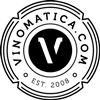MASTER TASTER

Master Taster, certified Sommelier, Italian and Spanish wine specialist in the US market for premium limited-production wines under the label Giammario Villa Wine Selection. Official teacher and counselor of North American Sommelier Association; Graduated member of Italian Sommelier Association. Wine Educator and new courses developer at University of California Los Angeles (UCLA Extension) one of the world’s most prestigious and respected institutions of higher learning. President and Founder of vinomatica.com

1. How did your passion for wine start and how and it become a profession in the US?
My passion for wine and food is part of my DNA. My grandfather, who grew up in the countryside of Rimini, used to produce wine and my great-grandmother managed an Italian osteria. So I grew up in an environment where land, tradition and trade were closely linked and eating and drinking well was something innate and natural.
Wine remained merely a passion until I began the sommelier course with AIS (Italian Sommelier Association) in 2002. I wouldn’t find out until years later that taking the course had been a winning choice. Years later when I had gone cross country from California to New York, I received a job offer as wine director for a major restaurant in the West Village of NYC. It was 2005 and that was the turning point.
Since then wine has become my profession. Since receiving my AIS diploma and my first job as wine director there have been years of work in the field of communication, as a journalist and as a marketing manager. I used to write about the wine market economy from NYC and to focus on marketing projects. All experiences that have contributed to my career as a wine educator and wine publisher.
2. After New York, how did you end up in California and how did your career change?
After a few years of experience in New York I moved to California. Los Angeles is where I started my career as a wine educator. First I began with the North American Sommelier Association, and then I had the great opportunity to teach at UCLA (University of California Los Angeles). Originally I was a guest at a seminar on Italian wine and after that event my current university department received many requests from attending students for me to become a permanent educator. Teaching has given me great satisfaction. Even today what gratifies me most about my job is knowing that I can be an mentor for those who want to embark on careers in the wine business here in the United States. I often receive emails from people who ask me for industry insight, advice, recommendations, and contacts.
3. Let’s talk about Vinomatica.com: How did you have the idea to create the first English online catalog dedicated to Italian grape varieties?
The idea came from my experience in wine business: students, wine lovers, professionals are often looking for timely, accurate and comprehensive information about the grapes. There are a huge quantity of websites and blogs dedicated to Italian wines. But none of them have in depth information and many of them even misspell the names of grapes. There is a lack of reliable technical information. You can find short descriptions of the best-known varieties, but you can’t find most of the Italian indigenous vines in English websites. That is why I decided to create this tool, both for the best known vine varieties (such as Sangiovese), and for the lesser known (particularly among US public) as Frappato or Chiavennasca.
4. Why did you choose the web and not, for example, to publish a book?
Because our online ‘library’ is a constant work in progress, it is dynamic, continuously changing. We add new sites and news daily, thanks to audience feedback. In addition, there is a social media aspect. We have connected websites to the Twitter, Facebook and Instagram accounts of each variety. This guarantees maximum visibility on social media and allow us to achieve greater and constant innovation.
5. Which setting have you chosen for your websites?
vinomatica.com is the main platform. From our wine publisher page you can surf to sites dedicated to individual varieties. They contain technical information on the grape variety (and its biotypes), maps, suggestions for pairing food and the list of wine producers. The whole project is a work in progress: the list of producers, for instance, will become a showcase but also a way to tell the stories of companies and businessmen, a space for reviews and suggestions. We would love to expand in the future by adding news on territory and gastronomic tourism. We are already working on a pilot project.
6. Vinomatica is not a wine blog and is not a communications agency, it’s a wine agency, what does it mean exactly?
Vinomatica is a synthesis of skills within the wine business. We offer wine education in collaboration with leading institutions such as UCLA (University of California Los Angeles and the North American Sommelier Association), we have online courses, we own and are publishers of a large number of sites dedicated to vines and to spreading the culture of Italian wine. We manage and update accounts on social networks, we build communication strategies for producers, we are wine scouts, recruiters and consultants for distributors. Our goal is to efficiently link supply and demand.
7. How is the wine education integrated into the communication project?
The wine education should work in parallel with the communication activities of the vineyards and producers. The more the public is informed, the more there will be desire for new information, and, in proportion this could raise the possibility of brand positioning and sales. The success of a product increases through knowledge and communication. During my classes students (a mix of buyers, journalists and collectors) often fall in love with wines that they did not know existed. The education and the culture can shape the market, I truly believe that.
8. Given the dynamism of Vinomatica, what are the plans for the future?
The expansion plans of the sites are vast. For instance there are sections dedicated to stories of wineries, tourism, food and wine. But we can also anticipate the project to implement the provision of training through new tools such as podcasts. Among the new platforms we are working on I would like to mention our latest addition – learnitalianwine.com, but also volcanicwines.com and a grape variety that I personally love emilialambrusco.com.
9. You are a successful wine educator, but also a wine consultant and recruiter of labels for the US market. The United States has become the largest consumer of wine and the largest importers of Italian wines. What do you foresee for the future?
The numbers tell us that the US market increasingly appreciates Italian wines and to date only 23 percent of Americans habitually consume wine. There is room for growth in the coming years, but only for those who can read the social changes and be able to adapt their products. The typical consumer who forecasts where the market will go in the next few years is 21 to 28 years olds, the so called “Millenials”.
This generation will lead the future market, and at the moment there is a lot of attention from this demographic to imported wines. There is curiosity about the world, about emerging markets and about classic wine producers (like Italy or France), but in particular about lesser-known districts. There is a hipster trend which is also found in the wine market; people look for something different, they desire to experience and fall in love with novelty.
10. Does this hide the risk of trends destined to fade away soon?
Actually it is the capacity of producers, consortia or marketing strategist to create fashions, not trends. The trend is ephemeral, vanishes soon, within a couple of seasons. Fashion instead is a trend that can last a decade and then gives a chance to consolidate a market.
11. Which are the future markets for Italian exports?
First, we need to make a distinction between “educated markets” and “uneducated markets.” Or in other words, between nations that for generations have historically consumed wine; and therefore have a different ‘taste’ and some knowledge of the wines, and nations of ‘young people’ that have recently come to appreciate imported wines, for social changes.
The latest numbers in 2015 show an increase of 6% in the turnover of Italian exports. As I mentioned, the established markets and steadily rising ones belong to the ‘educated’ category – US, UK and Germany. China has jumped to fourth place with an increase of 15% compared to 2014 in the import of Italian wines. This is definitely a fact not to underestimate. Investing in English communication, on social media and international channels, relying on brand ambassadors present in the area, and educating the public, these are strategies that Italian producers will have to employ to consolidate the strong markets and to reach out to emerging ones to be successful and increase percentages.
MMVIII copyright VINOMATICA.COM
